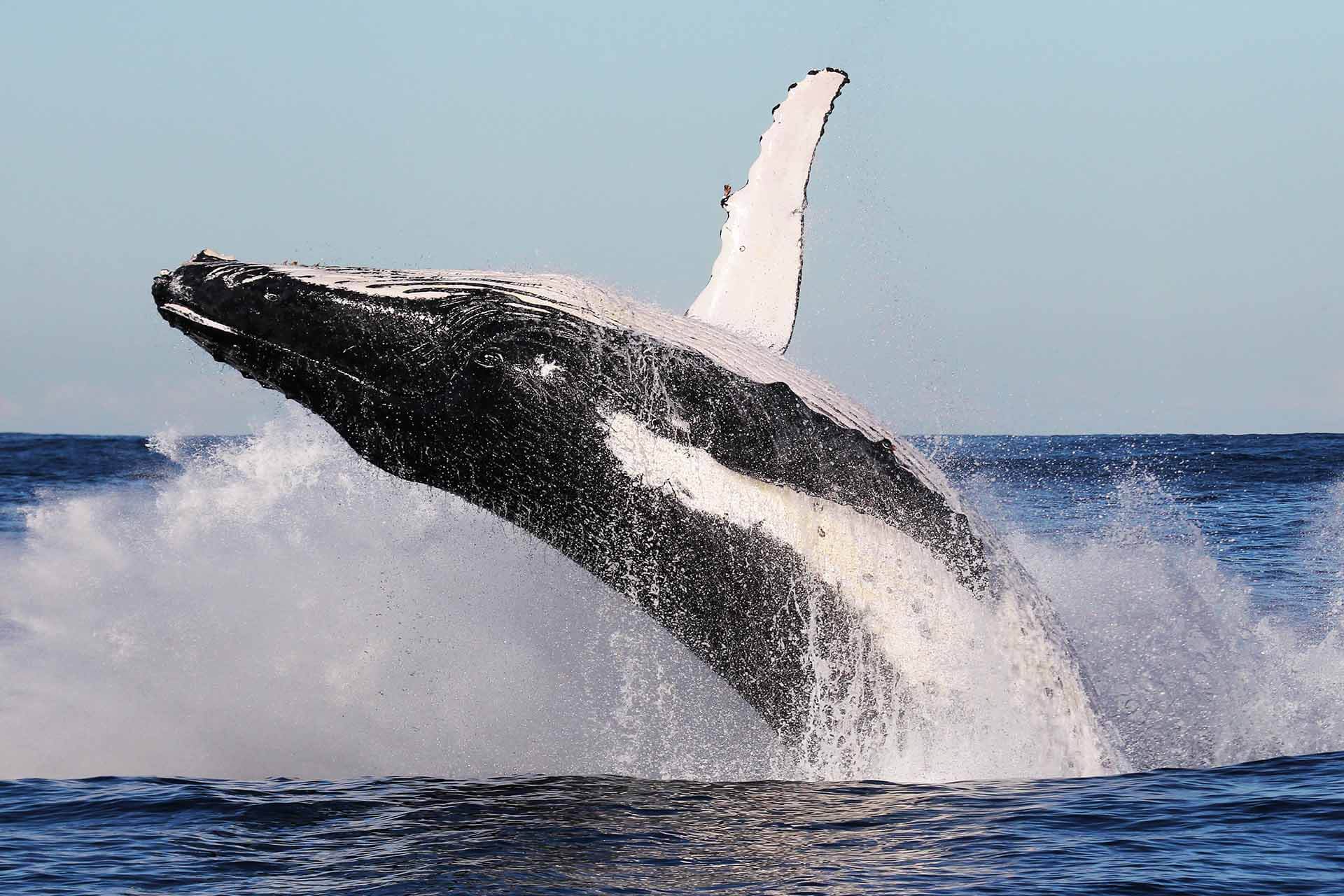Catch a glimpse of giants as the annual humpback whale migration starts in New South W(h)ales
The much-anticipated whale watching season has officially begun in NSW, marking the start of a spectacular natural event that brings joy and wonder to residents and visitors.
Avid whale watchers recently spotted the first handful of whales at locations including Shellharbour, Port Macquarie and Manly.
Around 40,000 humpback whales, known for their acrobatic breaches and enchanting songs, will leave the krill-rich waters of Antarctica in autumn, swimming north to warmer waters off Queensland and NSW to find mates, calve after 11 months gestation, or simply socialise before returning. This journey spans approximately 10,000 kilometres and is one of the longest migrations of any mammal.
These gentle giants, which can grow up to 17 metres in length and weigh as much as 40 metric tonnes captivate onlookers with their playful behaviour and sheer size.
For some whales, the annual migration along the NSW coast can lead to entanglement in fishing gear and marine debris. When this occurs, the NSW National Parks and Wildlife Service (NPWS) Large Whale Disentanglement Team is called into action. Operating only when conditions are safe, this highly trained team works from small boats in open seas to undertake the complex and dangerous task of rescuing 25–40 tonne wild animals from tangles of ropes and floats.
Ongoing scientific research is helping to shed light on whale migration patterns and the factors that increase entanglement risk. NPWS is collaborating with the University of NSW, DPIRD Fisheries, Sea World Foundation, Wild Sydney Harbour, and OceanWatch Australia to better understand how oceanographic conditions and migration routes intersect with human activity.
Funding through the NSW Marine Estate Management Strategy has positioned NSW as a national leader in whale disentanglement response and research.
While the sight of these magnificent creatures is awe-inspiring, it is important to observe them from a safe distance to ensure their well-being and your safety. NPWS reminds everyone that drones and watercraft, including surf craft, kayaks and boats, must stay at least 100m from a whale, or 300m if watching from a jetski or there is a calf present, to help protect these species.
For those keen to witness the humpback whale migration, some of the best viewing spots in national parks can be found here: Top whale watching spots | NSW National Parks
These locations offer excellent vantage points to see the whales as they travel close to the coast during their migration.
For more information about the best whale watching locations in New South Wales visit the NPWS whales' webpage.
If you see a distressed or entangled whale, please contact the NPWS on 13000PARKS (1300 072 757) or ORRCA on 02 9415 3333 immediately.
Quotes attributed to NSW National Parks and Wildlife Service Marine Wildlife Team Leader, Melissa Tan
“Let’s celebrate the start of whale watching season by appreciating the beauty of the humpback whales while ensuring their safety and protection.
“We’re incredibly fortunate to have a front-row seat to this extraordinary annual migration we can all observe, right up and down the coast.
“Thanks to funding from the NSW Marine Estate Management Strategy, we’re able to work with a huge range of agencies, professionals and volunteers, to undertake research and get the best outcomes for these incredible marine mammals.
“It’s fantastic that humpback whale numbers have bounced back to around 40,000 whales since the 1960s, when commercial whaling had reduced the east coast Australian population to potentially as few as 100 individuals.”
